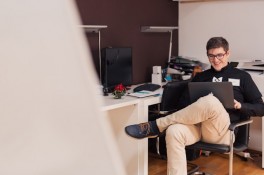An untouched office workspace generally features harsh lighting, generic furniture, and a cold feel to it, and this is why most workers opt to bring a few knick knacks to make their cubicles feel more like home. Given that the average employed individual spends 47 hours per week working, it’s no surprise why most professionals are eager to bring a personal touch to their workspace.
But according to a BBC report, some companies are banning employees from personalizing their workspace. This is because many corporations still take an authoritative view of work, according to Chris Cutter, founder and CEO of LifeDojo, a business which helps executives improve the health and wellness of their employees.
“Employers by their nature trend toward paternalism,” said Cutter. “So this kind of policy is part of that. It’s standardisation, it’s predictability.”
Psychologist and founding director of Exeter, UK-based Haddington Knight, Dr. Craig Knight, told the BBC that this way of thinking is the fruit of two leading management theories, which were very popular in the '90s—Six Sigma and Lean. Both theories support the idea that any object that is not related to one’s work is superfluous, and therefore should be eliminated from one’s workspace.
“The logic is that if all you have at your desk is what you need to do your job then you’ll be more productive,” said Knight. However, the psychologist points out that there is no proof that Six Sigma and Lean work. Moreover, it was said that these theories could be detrimental to productivity and morale.
In a study done by Knight and Professor Alex Haslam back in 2010 (via Psych Central), which involved more than 2,000 office workers, it was found that people who worked in enriched workspaces were 17 percent more productive than those who worked in bare or lean spaces. For this purpose, enriched spaces mean that they were decorated with plants and pictures.
Meanwhile, those who were seated at empowered desks, which means that the workers were allowed to design the area, were more productive by 32 percent than their lean counterparts.
Knight said that workers are more productive when they have a few personal items—such as family pictures, or a favorite mug—in their workspace.
“When we can enrich our space we’re happier,” he said. “And we work better when we’re happier.”
For more, check out Jobs & Hire’s report on how to makeover your workspace when it’s gloomy outside.
© 2017 Jobs & Hire All rights reserved. Do not reproduce without permission.




